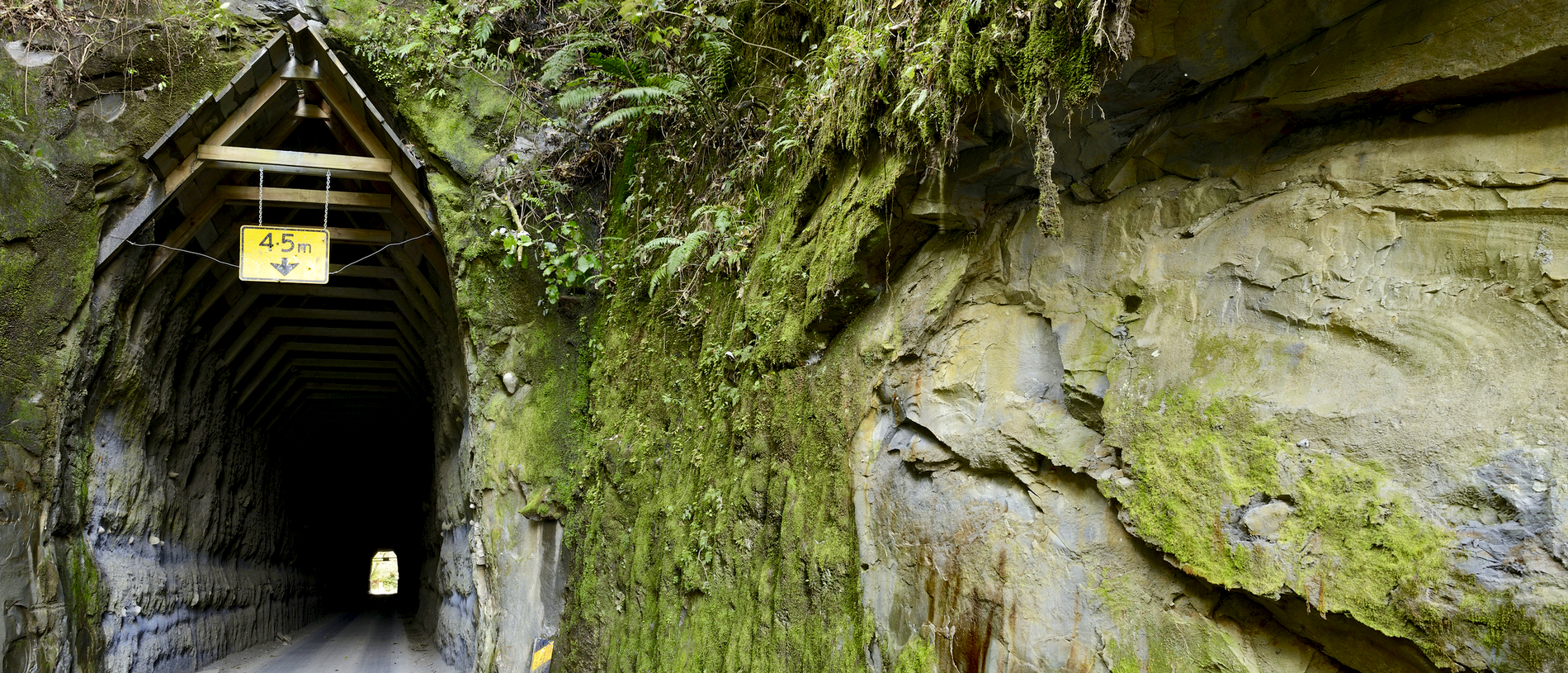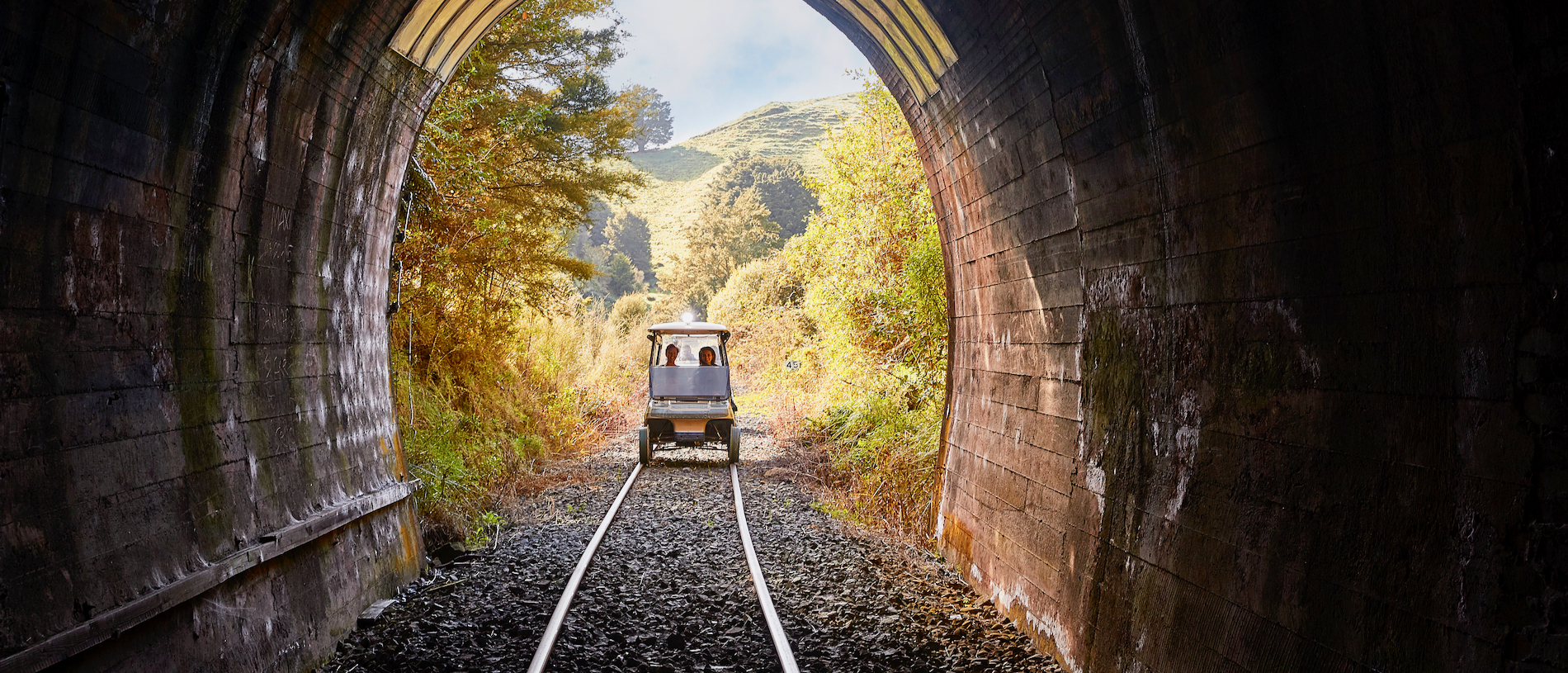
The Forgotten World Highway
There are no traffic jams here. The road from Stratford to Taumaranui is not called the Forgotten World Highway for nothing.

It is disconcerting driving through the countryside without holding a steering wheel.
Sitting in the driver’s seat of the small buggy, I’ve got my foot flat on the accelerator. A chilly breeze whistles through the open front, so I tuck my hands into the rug on my lap. There’s no need to steer here, as the cart is on rails; I couldn’t deviate if I wanted to. But still, it feels weird.
Forgotten World Adventures has been running self-drive tours along the disused stretch of railway line between Taumarunui and Stratford since 2012.
The rail line was closed in 2009 and officially mothballed in 2010. Seizing the opportunity, the team at Forgotten World managed to negotiate a 30 year lease to use the 160km of track, taking visitors deep into the rugged North Island countryside.
Today, there are more than 50 rail carts – repurposed golf buggies retrofitted with rubber wheels to ride along the train tracks. Originally the carts sat on an extra chassis with metal wheels, but were so noisy people had to be given earmuffs for the tour.
The buggies’ petrol engines are necessary, as there are no recharging points along the line, but one tank of gas will get visitors all the way to Whangamōmona and back.
Our guide, Ray, is a Taumarunui local. The semi-retired former postie is a bountiful source of insider knowledge.
He tells us about the history of Taumarunui, the small town in the heart of King Country. Under the reign of King Tawhiao, who was so well-respected, local tribes tended to get along. As a result, the hilly landscapes we pass through are significant for their lack of pā sites.
Governor Grey negotiated the construction of the Main Trunk Line through Taumarunui in the early 1900s, which became the key to industry for the area. The population peaked at around 7,000, with a 123-bed hospital, a nursing school and a freezing works all boosting the local industry.
While Taumarunui’s population has dwindled since then, the Forgotten World tours attract nearly 9,500 visitors to the town each year.
We begin our journey at Ōkahukura, picking our rail carts from the parked line up. Ray loads in the safety gear: a defibrillator, first aid kit and chainsaw, in case any trees have fallen and blocked the line.
Today’s five tunnel tour takes us on a 32km journey through craggy farmland and patches of dense native bush. The hills are formidably steep and life would have been intensely difficult for early pioneers.
Work began on the rail line in Stratford back in 1901. With 160km, 24 tunnels and 98 bridges, the track was finally completed in 1932, making it the most expensive and longest-running construction of any railway in New Zealand.
It’s hard to imagine the men working on the line – cold, wet and probably hungry – for 31 years.
We come to the longest tunnel on the tour, bringing our carts to a halt at the 800m-mark – officially halfway along its 1.6km length. The tunnel was constructed by hand – beginning in 1912, and reaching completion in 1920. Teams of men dug from either end, working in four-metre sections, 200 metres below ground. Ray gets us to turn off the lights on our buggies and we sit in the relentless dark. At nearly 100 years old, the tunnel is still in original condition, with no reinforcing required in a century.
Two of the tunnels we pass through – numbers 20 and 21 – were constructed out of red brick, when workers discovered patches of clay in the hills. Bricks were forged out of a durable mixture of clay and papa at a brickworks set up on a nearby plateau, rather than carting in gravel to make cement. Ray tells us that in 1922, when the brickworks was no longer required, the site was converted into the Egmont Box company, making native timber boxes in which butter was exported overseas.
In this remote countryside, there are often wildlife sightings.
The first carts on each tour will often spot wild pigs, goats or fallow deer on the tracks. Today, we’re lucky to spot a tiny kid, stepping, nimble-footed along the narrow track. Ray scoops him up so we can snap photos of his interesting markings – a black X across his white face.
At the end of the line we picnic on pumpkin soup and home baking at a sunny picnic table while Ray pivots the carts around on a turntable, and we rumble back the way we’ve come.